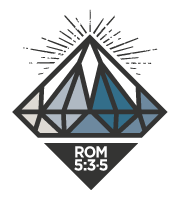You’ve heard it. Probably a thousand times.
“On a scale of one to ten, how would you rate your pain?”
I cannot help but read that in Baymax’s voice, from the movie Big Hero Six. 🙂 Of course, what is your answer? What part of your body are they referring to, anyway? The pain in your joints? Or your gut? Or your brain? And why does it matter what number you are anyway, isn’t it enough that you’re IN PAIN?!
Here you go, I have the answer, even without knowing your symptoms: an eight. Right? It’s always an eight. Want to know why? Go watch this…
Did you enjoy laughing for a few minutes? I hope so. 😉 Now, let’s get serious. I mean, I did title this post why pain charts are helpful… 😀
So, what is a pain chart?
Well, first of all, it’s you recording a lot more than just pain. I started keeping a pain (or maybe symptom is a better word?) chart near the beginning of all this, when we were trying to identify what in the world was wrong with me. At the time, it was especially for my gut.
What does a pain chart look like?
Mine look like this. For each day I write down what a number on the scale of one to ten, for each symptom, morning and evening. Something like this, for example (note that this is just a sample, there are lots more symptoms and such that wouldn’t fit in the screenshot):

I also use a different page, and list the date for each day, and list ‘variables’ that may have happened that day. Did I start a new supplement? Was there a hormonal shift? Did I go anywhere? Did I exercise? Did I run out of a supplement? Did I take a detox bath? Did it rain? Did I reintroduce a food? Was I exposed to chemicals or mold?

Now, you may notice that the first chart was on a Google spreadsheet, and the second picture was in a notebook. It really is up to you which you would prefer to use. I’ve done both.
Whatever you do, it’s probably best to do it all in one or the other- the same place (yes, yes, I did it all in the same place, look at the dates!). Doing it on your computer, it might be better, since you’ll not have to ever get rid of it because it got contaminated, and you’ll also have it with you even if you go on a trip, or something. (On that note, I’d suggest using Google spreadsheets rather than Microsoft). If it is recorded electronically, as well, it makes it easier to show your doctor, if you need to. With all that said, I personally prefer a notebook… don’t ask me why, I guess I find it easier to remember to write down the symptoms. Or maybe I just like paper 😉
How does it help?
It helps tremendously in determining the reason why behind any flares, or bad days. And as we know, knowing the why is the first difficult step in knowing how to help the problem. It also helps to see after a while of keeping track if there are any patterns; both good patterns, and bad patterns. Maybe you notice that brain fog is better on the days you exercise. Maybe on the days after going to the grocery store, you look over your chart and realize you have more dizziness on those days. Then you can think about it and try to figure it out… was the store moldy? Was it the chemicals in the store? Was it the fluorescent lights, colors, and sounds that were overwhelming your senses? If you aren’t sure, you can check what happened last time… or at other stores last time.
Of course, this means that you need to keep track of it all every day. I usually do it right before bed. I know it’s easy to skip doing it, especially on bad days, but do it! Especially on the bad days. That’s when it’s most important. 🙂
One more thing…
If you remember, I earlier mentioned keeping track of things for gut pain. What I meant, is keeping track of the food that I ate, trying to narrow down and determine which foods bothered me. Yes, every food. Seasonings too. It’s a tedious task, but very helpful.
Relying on your brain isn’t the best option. If you’re like me you have brain fog, and it is all you can do to remember what symptoms you have in the first place, let alone what you felt each day and what caused that feeling. So keep track! I’ll even include a sample chart to get you started.
Here it is:
*Note: If you look carefully, all the boxes with yellow corners have explanatory notes and reminders on them. Just hover over them to see them.

My younger sister is much better at keeping a symptom/daily health journal than I am. I used to, though never extremely faithfully, and fell out of the habit sometimes last year. Anyway, for all my lackadaisicalness about it, I cannot argue the fact that it *is* a good idea and even an asset. 😀
Sara, this post was great. I love hearing all your different methods of keeping track. Love you!